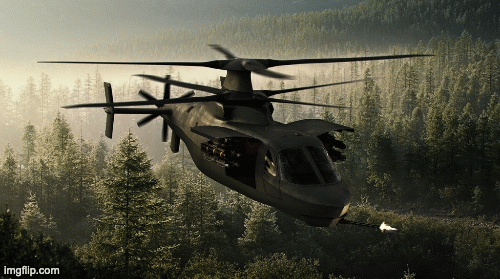The two companies will build their final prototypes and face a fly-off competition in 2023.
The U.S. Army Future Vertical Lift Cross-Functional Team on March 25, 2020 selected the two competitors for the second phase of the Future Attack Reconnaissance Aircraft (FARA) program: the Bell 360 Invictus and the Sikorsky Raider X. As you may already know, FARA is intended to fill the capability gap left by the retirement of the Bell OH-58D Kiowa Warrior with initial fielding of the new helicopter by 2028.
BREAKING NEWS: @USArmy selects @BellFlight and @Sikorsky (@LockheedMartin) to build and test #FARA Competitive Prototypes @armyfutures #FVL #ArmyModernization pic.twitter.com/dktlAS25Wc
— Future Vertical Lift Cross-Functional Team (@FVLCFT) March 25, 2020
As noted in the official statement, the program is structured into three phases: preliminary design; detailed design, build, and test; and prototype completion assessment and evaluation for entrance into production phase. The first phase saw the preliminary design of five candidates presented by Bell, Sikorsky, Boeing, AVX Aircraft/L3 Harris and Karem Aircraft. The U.S. Army selected Bell’s and Sikorsky’s proposals after an initial design and risk assessment, granting them contracts for detailed design, build and test of their air vehicle solutions worth respectively $ 700 million and $ 940 million. The two companies will face a final fly-off competition in 2023.
“The Future Attack Reconnaissance Aircraft is the Army’s number one aviation modernization priority and is integral to effectively penetrate and dis-integrate adversaries’ Integrated Air Defense Systems. It will enable combatant commanders with greater tactical, operational and strategic capabilities through significantly increased speed, range, endurance, survivability and lethality”, said Dr. Bruce D. Jette, Assistant Secretary of the Army for Acquisition, Logistics and Technology.
The Bell 360 Invictus, which we covered in greater detail in a previous article here at The Aviationist, uses a simple design with proven technologies to reduce risk and cost, like its main rotor which is a scaled down version of the articulated five-blade rotor designed for the Bell 525 Relentless, a super-medium-lift twin-engine commercial helicopter for the off-shore market.
One aspect that hit the headlines as soon as the Invictus was unveiled is its streamlined design much comparable to the RAH-66 Comanche. Here’s what this Author wrote about this in that occasion:
Another feature that will help the helicopter reach high speeds is its streamlined profile, internal weapon bays, main rotor aerodynamic shroud, retractable landing gear and a ducted tail rotor, which is also slightly canted. This design is highly reminiscent of the Boeing/Sikorsky RAH-66 Comanche, the stealth armed reconnaissance helicopter designed in the 1980s to replace the OH-6 Cayuse and the OH-58 Kiowa and to designate targets for the AH-64 Apache. The program was canceled in 2004 with only two flying prototypes built.
Stealth, however, is not the reason of the design adopted for the Invictus. “Everything we have done has been focused on how do you keep the lowest drag possible on the aircraft, so we don’t have to add exotic solutions to the aircraft the meet the requirements to get the speeds that you need for the FARA program”, said Flail during the presentation.
The Sikorsky Raider X, on the other hand, features a more complex solution with a coaxial main rotor and a pusher propeller. The Raider X is a scaled-up version of the S-97 Raider, with a side-by-side cockpit to widen the fuselage and increase the payload carried in the internal weapon bays. Speaking about the payload, Lockheed Martin (which acquired Sikorsky in 2015) published a new concept art that shows for the first time the Raider X with its weapon bays open and the turret for the 20 mm cannon in front of the cockpit.
Recently, Bell and Sikorsky were awarded contracts also in the other Future Vertical Lift program, the Future Long Range Assault Aircraft (FLRAA) that will replace the UH-60 Black Hawk. Like for FARA, the two companies submitted two completely different designs, with Bell proposing the V-280 Valor tiltrotor and Sikorsky (in partnership with Boeing) proposing the SB>1 coaxial compound helicopter. This time there were no additional competitors, so Bell and Sikorsky received two-years contracts to refine their already flying prototypes and produce conceptual designs, requirements feasibility, and trade studies for a final, ready to combat, aircraft proposal.









